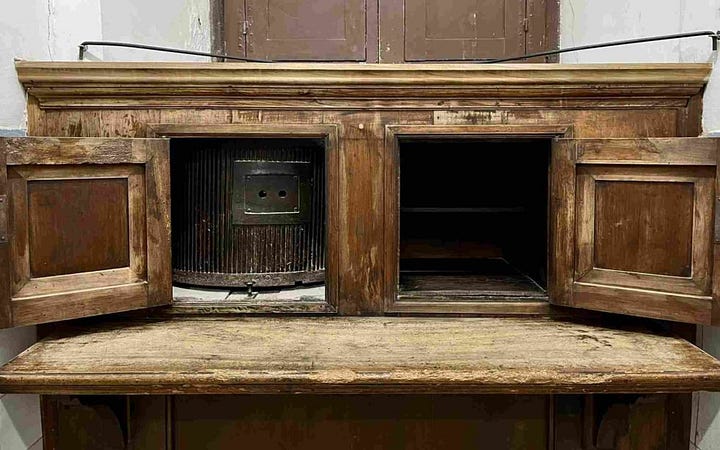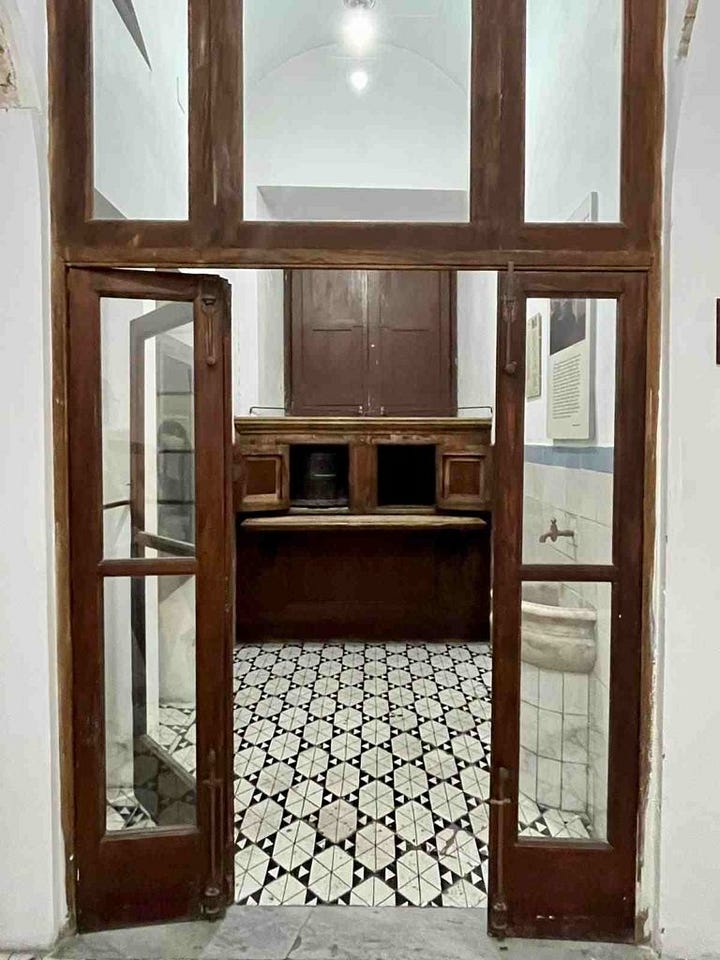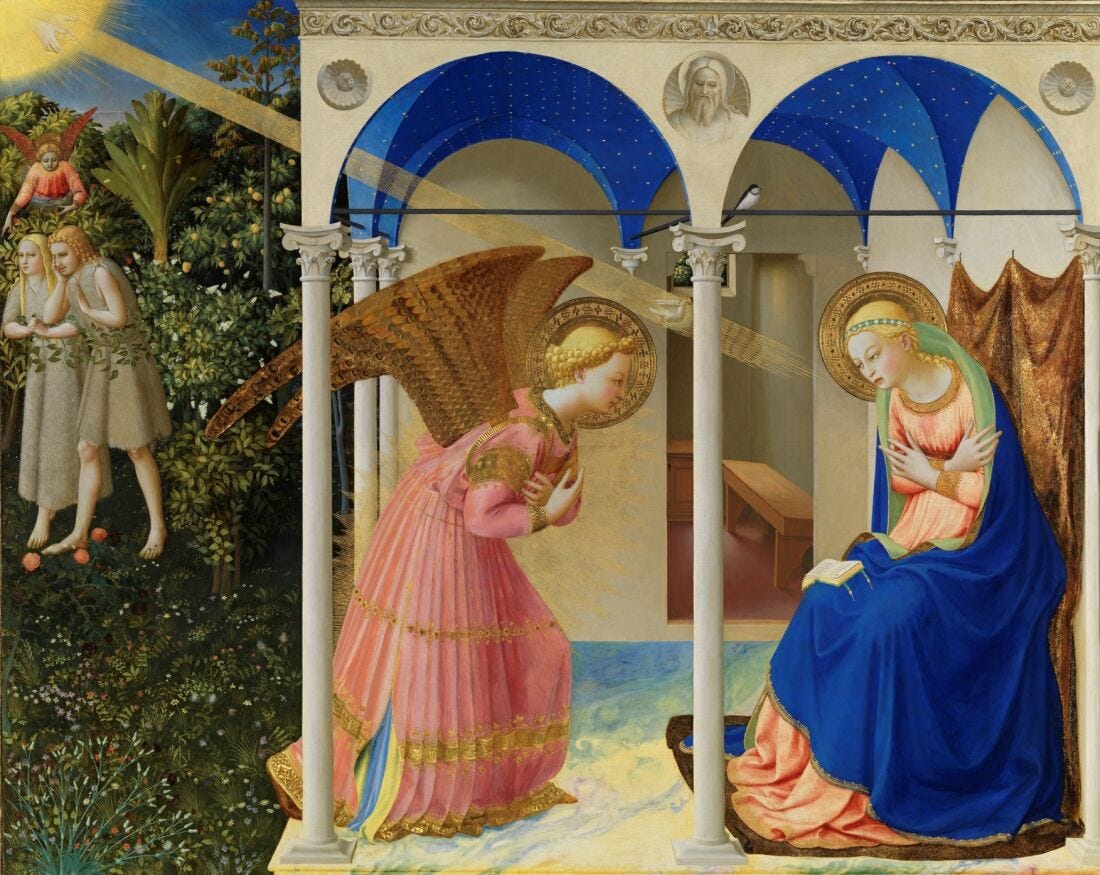Yesterday, we celebrated the Feast of St Gabriel the Archangel and how appropriate that Holy Mother Church celebrates the Feast of the Annunciation the next day which is uncoincidentally 9 months before the Nativity of Our Lord and nearly 3 months (June 24th) before the Feast of the Birth of St John the Baptist.
It's believed that St. Gabriel is also the angel who appeared to St. Joseph (Matthew 1:20) and to the shepherds on Christmas (Luke 2:8-20). Tradition also holds that it was he who tended to Christ as He spent the night in the Garden of Gethsemani before His Passion (Luke 22:39-44),
It's also believed that he will be the angel to announce the End of Time (Matthew 24:31). I Thessalonians 4:15 reads, my emphasis:For the Lord himself shall come down from heaven with commandment, and with the voice of an archangel, and with the trumpet of God: and the dead who are in Christ, shall rise first.
I Corinthians 15:51-52 also gives hints about this Mystery:
Behold, I tell you a mystery. We shall all indeed rise again: but we shall not all be changed. In a moment, in the twinkling of an eye, at the last trumpet: for the trumpet shall sound, and the dead shall rise again incorruptible: and we shall be changed.1
Dante describes the scene of the Annunciation so beautifully in Canto XXIII of his Paradiso, referring to Gabriel as "Angelic Love":
Athwart the heavens a little torch descended
Formed in a circle like a coronal,
And cinctured it, and whirled itself about it.
Whatever melody most sweetly soundeth
On earth, and to itself most draws the soul,
Would seem a cloud that, rent asunder, thunders,
Compared unto the sounding of that lyre
Wherewith was crowned the sapphire beautiful,
Which gives the clearest heaven its sapphire hue.
“I am Angelic Love, that circle round
The joy sublime which breathes from out the womb
That was the hostelry of our Desire;
And I shall circle, Lady of Heaven, while
Thou followest thy Son, and mak’st diviner
The sphere supreme, because thou enterest there.”
JS Bach wrote Wie Schön Leuchtet Der Morgenstern for the day…
The Archbishop of Genoa, Jacobus de Voragine, in his "Golden Legend" wrote this of the Annunciation in 1275:
This blessed Annunciation happened the twentyfifth day of the month of March, on which day happened also, as well tofore as after, these things that hereafter be named. On that same day Adam, the first man, was created and fell into original sin by inobedience, and was put out of paradise terrestrial. After, the angel showed the conception of our Lord to the glorious Virgin Mary. Also that same day of the month Cain slew Abel his brother. Also Melchisedech made offering to God of bread and wine in the presence of Abraham. Also on the same day Abraham offered Isaac his son. That same day St. John Baptist was beheaded, and St. Peter was that day delivered out of prison, and St. James the more, that day beheaded of Herod. And our Lord Jesu Christ was on that day crucified, wherefore that is a day of great reverence.
The Annunciation is celebrated in a special way in Florence. In 1250, the seven founders of the Servite Order built the Oratory of Cafaggio there. It is now a basilica, and at its entrance is a very old painting, one said to be a result of a miracle. The artist who painted it was having some difficulty in portraying the Virgin when he fell asleep only to wake up to find her depiction completed -- and utterly beautiful. Ever since then, pilgrims would come to honor the Virgin by visiting the miraculous painting. Among those pilgrims have been St. Charles Borromeo, Pope Pius IX, and St. Aloysius Gonzaga, who made his vows of perpetual virginity before it. To this day, fairs are held in Florence on Our Lady's Day.2
In Naples, it is said that the Virgin walks about at night, feeding the poor, orphans, and all who call on her -- so much so that she wears out her shoes. The Basilica of the Santissima Annunziata Maggiore there used to be a great orphanage run by nuns, and it was housed with a great wheel -- la Ruota degli Espositi, the Wheel of the Exposed, that is of babies who in less Christian times would have been left to die exposed on rocks. From outside the convent, babies who needed to be cared for were placed on the wheel which, when turned, would carry them inside the convent where they could be retrieved and loved by the nuns as best as they could.


In the basilica, a statue of the Virgin known as Madonna delle Scarpette (Madonna of the Shoes) is venerated on this day (and on the Feast of the Assumption). She has real hair, and is dressed in a beautiful white brocade dress with gold threads and a blue cape -- but her gold satin shoes mysteriously wear out and are replaced each year on this feast by the nuns who tend to it. The worn-out shoes are loaned out to the very sick to place under their pillows, and many miracles are said to have been granted through this devotion. Grateful people who've been granted such favors by God will leave shoes as an ex-voto offering, with some women also leaving their hair at the foot of the statue.
https://fisheaters.com/stgabriel.html
https://fisheaters.com/customslent6.html






